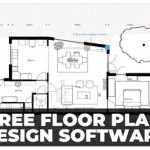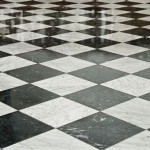Average Cost For Hardwood Floor Installation: A Comprehensive Guide
Hardwood flooring is a desirable and timeless choice for homeowners seeking to enhance the aesthetic appeal and value of their properties. Its durability, natural beauty, and potential for long-term cost-effectiveness make it a popular option. However, understanding the average cost for hardwood floor installation is crucial for budgeting and planning any flooring project. This article delves into the various factors influencing the overall cost, providing a detailed breakdown to assist homeowners in making informed decisions.
The cost of hardwood floor installation is not a fixed figure. It varies considerably depending on a range of factors, including the type of wood, the size of the area to be covered, the complexity of the installation, and the geographical location. Understanding these variables is the first step toward accurately estimating the expense of a hardwood flooring project.
Understanding Material Costs: Wood Species and Grades
A significant portion of the overall installation cost is attributed to the price of the hardwood itself. The species of wood selected plays a crucial role in determining this cost. Common hardwood species include oak, maple, hickory, cherry, and walnut. Oak is generally one of the most affordable options, while exotic species like Brazilian cherry or walnut tend to be considerably more expensive due to their rarity and the cost of importing them.
Beyond the species, the grade of the wood also influences the price. Hardwood flooring is typically graded based on its appearance and the presence of imperfections like knots and color variations. Higher grades, such as select and better, offer a more uniform and cleaner look, commanding a higher price. Common grades, which exhibit more natural character and imperfections, are generally less expensive. The choice of grade depends on the homeowner's aesthetic preferences and budget considerations.
Furthermore, the type of hardwood flooring – solid versus engineered – affects material costs. Solid hardwood is made from a single piece of wood, offering durability and the potential for refinishing multiple times. Engineered hardwood, on the other hand, consists of a thin layer of hardwood veneer bonded to a core of plywood or fiberboard. Engineered hardwood is generally more resistant to moisture and temperature fluctuations, making it a suitable option for basements and areas with high humidity. While engineered hardwood can sometimes be less expensive than solid hardwood, premium engineered options can still command a significant price.
The width and thickness of the planks also contribute to the overall material cost. Wider planks often require more raw material and can be more challenging to install, leading to a higher price per square foot. Thicker planks, particularly in solid hardwood, offer greater longevity and the ability to be refinished more times, but they also come with a higher price tag.
Labor Costs: Installation Complexity and Preparation
Labor costs represent another substantial portion of the total installation expense. These costs are primarily determined by the complexity of the installation process, the size of the area to be covered, and the local labor market rates. A straightforward installation in a square or rectangular room will typically be less expensive than an installation involving intricate patterns, custom borders, or working around obstacles like doorways and cabinets.
The preparation of the subfloor is a critical step that can significantly impact labor costs. A level, clean, and dry subfloor is essential for a successful hardwood floor installation. If the existing subfloor is uneven, damaged, or contaminated with moisture, additional work will be required to prepare it properly. This may involve leveling the subfloor with self-leveling compound, repairing damaged areas, or installing a moisture barrier. Such preparation work can add significantly to the overall labor costs.
The type of installation method also influences labor costs. There are three primary methods for installing hardwood floors: nailing, gluing, and floating. Nailing is the most common method for solid hardwood, while gluing is often used for engineered hardwood. Floating involves interlocking the planks together without attaching them to the subfloor. Each method requires different tools and techniques, affecting the time and labor involved. Complex patterns, such as herringbone or parquet, necessitate specialized skills and more time, resulting in higher labor costs.
The removal and disposal of existing flooring can also contribute to labor costs. If the homeowner is replacing existing flooring, the removal process can be time-consuming and require the proper disposal of the old materials. This task is typically handled by the installation crew and is factored into the overall labor estimate.
Furthermore, the geographical location plays a role in determining labor costs. Labor rates vary significantly depending on the local market conditions, the availability of skilled installers, and the cost of living in the area. Urban areas with higher costs of living tend to have higher labor rates than rural areas.
Additional Costs: Underlayment, Trim, and Finishing
Beyond the cost of materials and labor, several additional expenses can contribute to the overall cost of hardwood floor installation. These include the cost of underlayment, trim and molding, and finishing materials.
Underlayment is a layer of material installed between the subfloor and the hardwood flooring. It provides cushioning, reduces noise transmission, and acts as a moisture barrier. The type of underlayment required depends on the type of hardwood flooring and the subfloor conditions. While some engineered hardwood floors come with a pre-attached underlayment, others require a separate layer. The cost of underlayment varies depending on its thickness, material, and sound-dampening properties.
Trim and molding are used to cover the edges of the hardwood flooring where it meets walls, doorways, and other surfaces. They provide a finished look and protect the edges of the flooring. Common types of trim include baseboards, quarter round, and shoe molding. The cost of trim and molding depends on the material, style, and quantity required. Hardwood trim is typically more expensive than composite or vinyl trim.
Finishing is an important step in the hardwood floor installation process, particularly for unfinished hardwood. Finishing involves sanding the floor to create a smooth surface, applying stain to achieve the desired color, and applying multiple coats of sealant or polyurethane to protect the wood from wear and tear. The cost of finishing depends on the type of finish used, the number of coats applied, and the size of the area to be covered. High-quality finishes offer greater durability and resistance to scratches and moisture, but they also come with a higher price tag.
Additionally, consider the cost of moving furniture and appliances out of the room before the installation begins. Some installers may include this service in their estimate, while others may charge extra. It is important to clarify this detail during the quoting process.
Permits may also be required depending on local building codes. It is important to check with the local building department to determine if any permits are necessary for the hardwood floor installation project. The cost of permits varies depending on the location and the scope of the project.
Finally, it is prudent to factor in a contingency fund to cover unexpected expenses that may arise during the installation process. These expenses could include unforeseen subfloor repairs, additional materials needed, or changes to the project scope. A contingency fund of 5-10% of the total estimated cost is generally recommended.
In summary, the average cost for hardwood floor installation is influenced by a complex interplay of factors. A thorough understanding of these factors is essential for homeowners to accurately estimate the cost of their project and make informed decisions. By carefully considering the type of wood, the complexity of the installation, and the additional costs involved, homeowners can create a realistic budget and ensure a successful hardwood flooring project.

How Much Does Hardwood Flooring Cost 2025 Guide

Cost To Install Hardwood Floors The Home

Average Flooring Cost For Hardwood Installation Cmo

Cost Of Installing Hardwood Floors Top 2024 Price Guide

How Much Does Flooring Installation Cost 2025

Cost To Install Hardwood Floors The Home

The Complete Guide To Flooring Costs By Type Twenty Oak

How Much Does Hardwood Flooring Cost 2025 Guide

Cost Of Installing Hardwood Floors Top 2024 Price Guide

Cost To Install Hardwood Floors The Home








